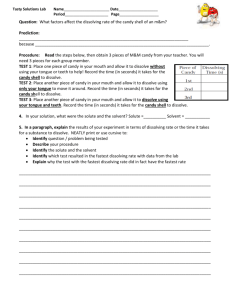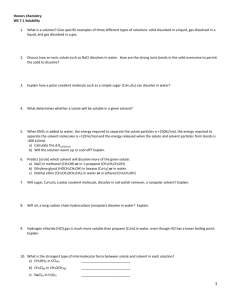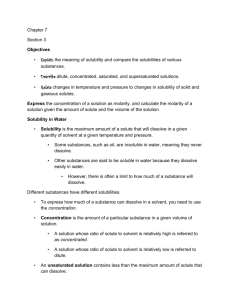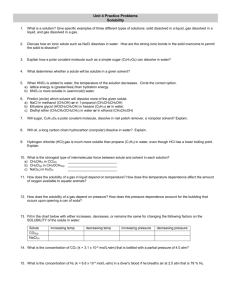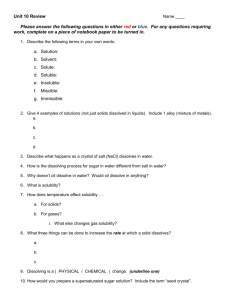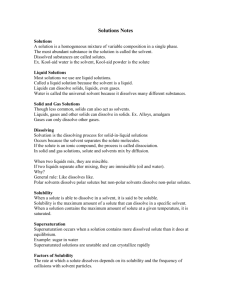A Tasty Solution Lab
advertisement
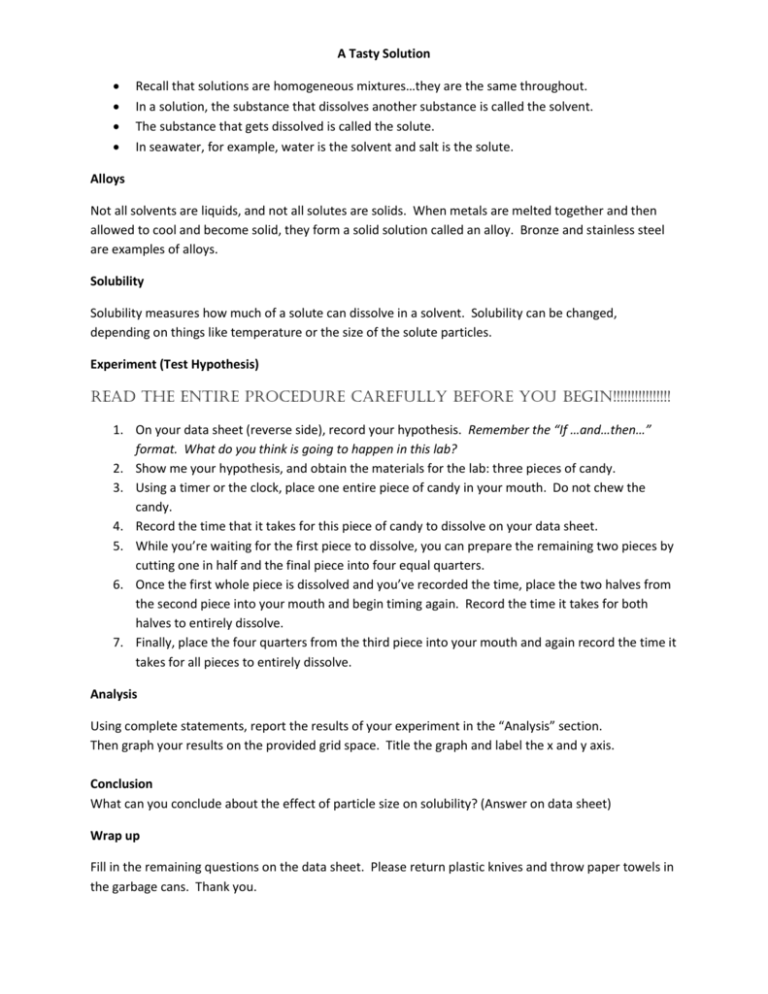
A Tasty Solution Recall that solutions are homogeneous mixtures…they are the same throughout. In a solution, the substance that dissolves another substance is called the solvent. The substance that gets dissolved is called the solute. In seawater, for example, water is the solvent and salt is the solute. Alloys Not all solvents are liquids, and not all solutes are solids. When metals are melted together and then allowed to cool and become solid, they form a solid solution called an alloy. Bronze and stainless steel are examples of alloys. Solubility Solubility measures how much of a solute can dissolve in a solvent. Solubility can be changed, depending on things like temperature or the size of the solute particles. Experiment (Test Hypothesis) Read the entire procedure carefully before you begin!!!!!!!!!!!!!!!! 1. On your data sheet (reverse side), record your hypothesis. Remember the “If …and…then…” format. What do you think is going to happen in this lab? 2. Show me your hypothesis, and obtain the materials for the lab: three pieces of candy. 3. Using a timer or the clock, place one entire piece of candy in your mouth. Do not chew the candy. 4. Record the time that it takes for this piece of candy to dissolve on your data sheet. 5. While you’re waiting for the first piece to dissolve, you can prepare the remaining two pieces by cutting one in half and the final piece into four equal quarters. 6. Once the first whole piece is dissolved and you’ve recorded the time, place the two halves from the second piece into your mouth and begin timing again. Record the time it takes for both halves to entirely dissolve. 7. Finally, place the four quarters from the third piece into your mouth and again record the time it takes for all pieces to entirely dissolve. Analysis Using complete statements, report the results of your experiment in the “Analysis” section. Then graph your results on the provided grid space. Title the graph and label the x and y axis. Conclusion What can you conclude about the effect of particle size on solubility? (Answer on data sheet) Wrap up Fill in the remaining questions on the data sheet. Please return plastic knives and throw paper towels in the garbage cans. Thank you. Name_________________________________________________ Date Sheet: A Tasty Solution Hypothesis _____________________________________________________________________________________ _____________________________________________________________________________________ _____________________________________________________________________________________ Experimental Results Piece Number Time to dissolve (seconds or minutes) First Second Third Analysis What did your experiment tell you about your hypothesis? _____________________________________ _____________________________________________________________________________________ _____________________________________________________________________________________ _____________________________________________________________________________________ Conclusion What can you conclude about the effect of solute size on solubility? _____________________________ _____________________________________________________________________________________ _____________________________________________________________________________________ _____________________________________________________________________________________ Wrap Up Fill in the blanks with an appropriate word. 1. Solutions contain two parts, a ______________________ and a ______________________. 2. The candy dissolves in the _______________________ in your mouth to form a liquid solution. 3. The solvent in this experiment is ____________________ and the ______________________ is the candy. 4. The solute ______________________________ by spreading out evenly throughout the solvent. 5. Brass is made of copper dissolved in zinc; it is a special type of solution called a(n) ________________________.


